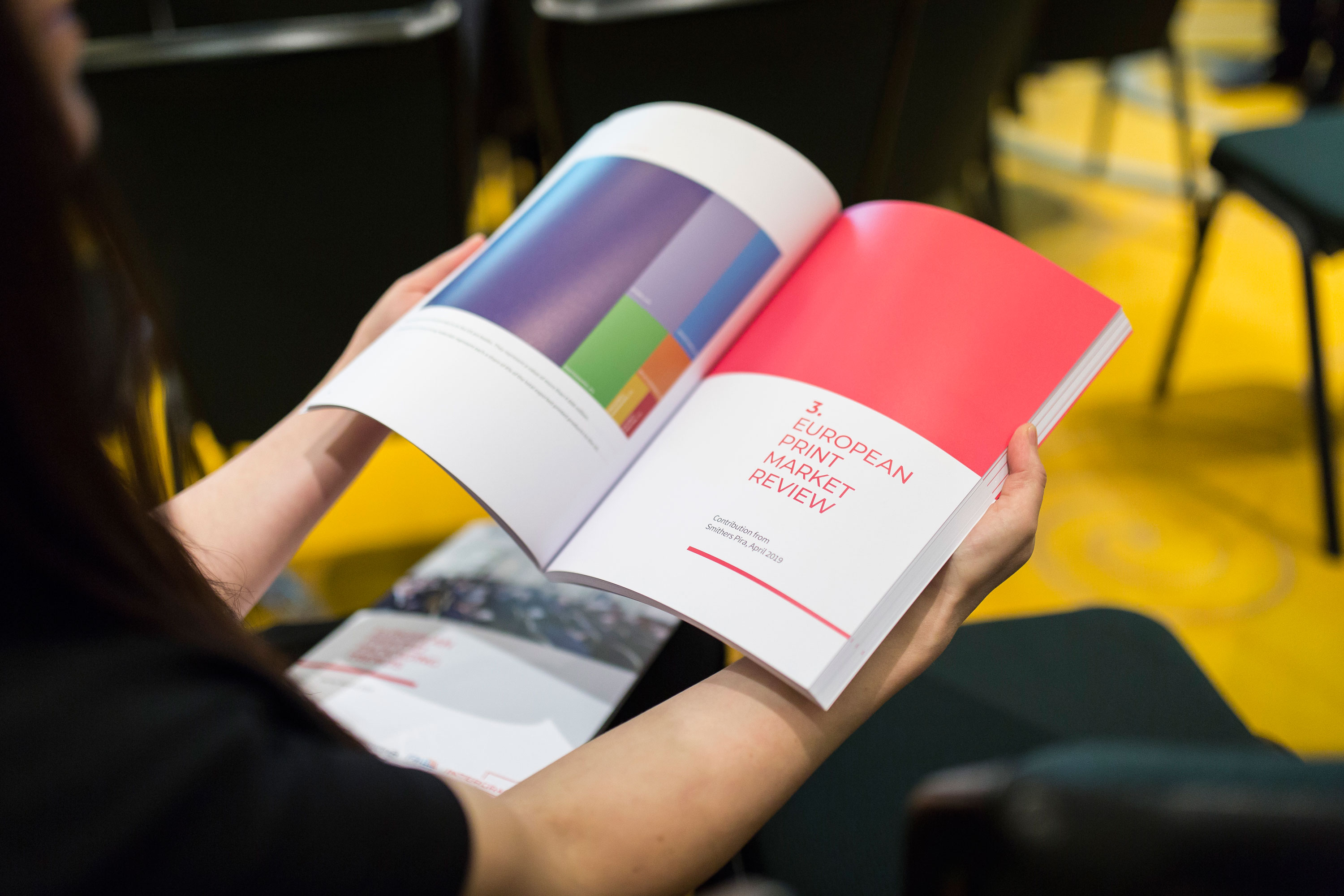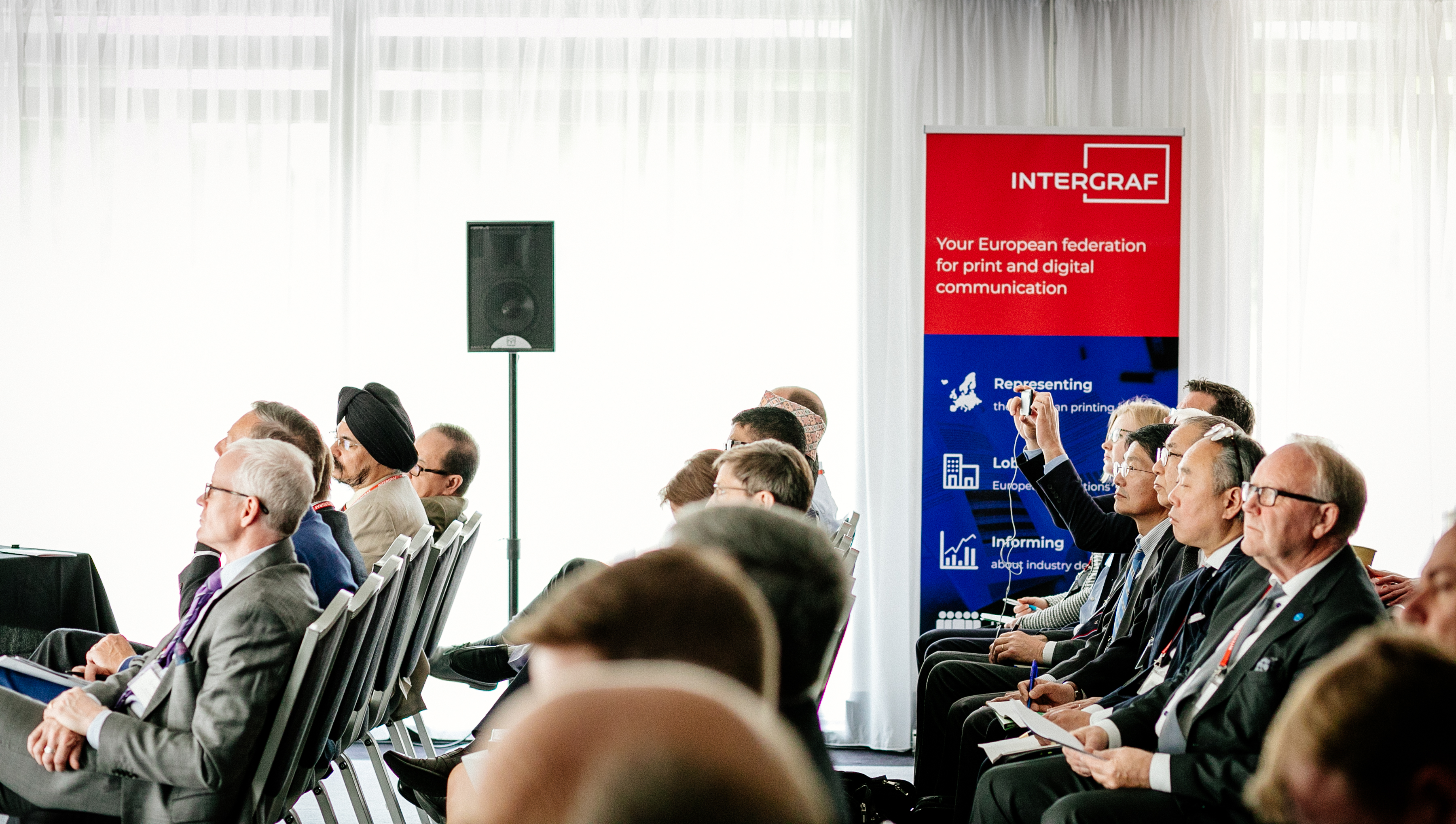Sean Smyth interview: shaping the future of the magazine market
9 November 2017
Sean Smyth interview: shaping the future of the magazine market
{K2Splitter}  Dr. Sean Smyth, Print Consultant at market research firm Smithers Pira and printing industry expert, discusses the magazine market in Europe with Intergraf in an exclusive interview. Sean will present at our upcoming Magazine Seminar 2018 on 1st February 2018 - contact us to secure your place at this event.
Dr. Sean Smyth, Print Consultant at market research firm Smithers Pira and printing industry expert, discusses the magazine market in Europe with Intergraf in an exclusive interview. Sean will present at our upcoming Magazine Seminar 2018 on 1st February 2018 - contact us to secure your place at this event.
What are the benefits for Smithers Pira of working with Intergraf?
Smithers Pira is the worldwide authority on packaging, paper and print industry. We publish leading market studies and offer market consultancy and testing for the security printing industry—helping them with strategic planning and looking at potential market opportunities, etc. Working with leading associations like Intergraf is enormously beneficial in our mission to keep on top of industry trends and to help the industry to grow. Partnering on important industry events like the Magazine Seminar allows us to share our deep industry knowledge and connect with all of the leading players across the value chain.
What is your background and what do you do at Smithers Pira?
I am a print “Techie”, having held various positions at large and small printing companies, helping them use the appropriate technologies to make money. At Smithers Pira I act as an analyst to develop our market sizing and then determine the implications for organisations across the print and packaging supply chains. This involves authoring some Smithers Pira Reports, including the flagship “The Future of Global Print to 2022” which will be published at the end of 2017 – it will also provide the base data we are looking at in our presentation in February.
What are the challenges facing the magazine sector?
Printed magazines remain a major market, for consumer titles, business to business trade magazines and even in Scientific, Technical and Medical sectors. There are newspaper supplements and many specialist titles, but the physical printed copy is under pressure. Publishers need to make the content relevant and timely to encourage consumers to buy magazines. There is always cost pressure, with paper, printing and distribution all large cost components for publishers. The pressure for cost reduction is putting major pressure onto printers – in Europe there have been many casualties putting the supply chain at risk when print groups fail, such as Polestar in the UK.
What are the opportunities?
Good content, relevant to readers is still successful, with some titles doing very well, while others fail. It was always this way, but in 2017 the printed version is competing with other media channels for consumer time and attention. Publishers are finding new ways to engage with consumers and deliver advertising channels – there are tie-ups with TV, film and celebrities, while co-branding is still popular. We are seeing magazine type catalogues – “Magalogues” being developed. To encourage readership publishers are exploring new formats and eye-catching colours and effects on covers.
What are the most crucial future trends?
The biggest is the changing consumer preferences, with many individuals moving away from physical printed copies to consume electronic versions. This is making magazine publishers examine their business models, identifying other sources of revenue than the traditional advertising and cover price sources. Most titles have websites, providing new content and user experiences alongside reading a magazine.
What advice do you have for magazine printers?
The sector is extremely competitive (over 35 UK production units have closed since 2000) so printers need to maximise their efficiencies, using the most appropriate technology. Workflow automation is critical, helping customers deliver their content ever closer to the on-sale date and making it easy to change pagination late in the schedule. Gravure, heatset and sheetfed litho are being joined by high speed inkjet to allow personalisation and versioning. There are opportunities to add value for printers, with more colours and special effects, interesting binding including selective versioning, handling subscriptions and managing content for example.
What will you be speaking about at Magazine Seminar 2018?
All of the above, sharing the results of a research programme being undertaken now, exploring the strategies of both print suppliers and publishers.
Is there anything you would like to add?
Magazine publishing has a great future, with print remaining the major channel for many years, it represents the biggest revenue opportunity but no longer the sole one. New printing technologies can help publishers attract and retain readers, so there is reason for optimism!






